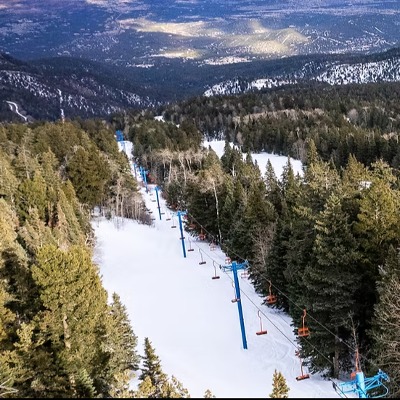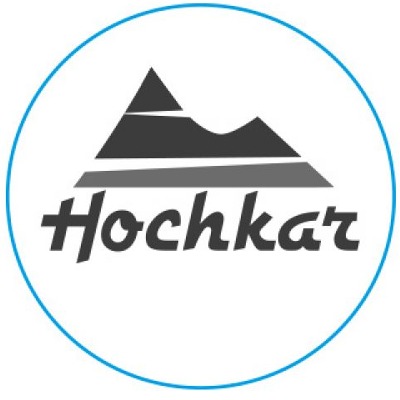Vail Resorts Reports Fiscal 2021 First Quarter & Season Pass Results

Vail Resorts, Inc. (NYSE: MTN) has reported results for the first quarter of fiscal 2021 ended October 31, 2020, which were negatively impacted by COVID-19 related limitations, restrictions and closures, and provided season pass sales results.
Highlights
- Net loss attributable to Vail Resorts, Inc. was $153.8 million for the first fiscal quarter of 2021, a decrease of 44.4% compared to the first fiscal quarter of 2020, primarily as a result of the negative impacts of COVID-19.
- Resort Reported EBITDA loss was $94.8 million for the first fiscal quarter of 2021, compared to a Resort Reported EBITDA loss of $76.7 million for the first fiscal quarter of 2020, primarily as a result of the negative impacts of COVID-19 and partially offset by disciplined cost management and $15.4 million of lift revenue recognized in the first fiscal quarter of 2021 associated with the expiration of the credit offers to 2019/2020 pass product holders.
- Season pass sales through December 6, 2020 for the upcoming 2020/2021 North American ski season increased approximately 20% in units and were flat in sales dollars as compared to the period in the prior year through December 8, 2019, with sales dollars for this year reduced by the value of the redeemed credits provided to 2019/2020 North American pass holders. Without deducting for the value of the redeemed credits, sales dollars increased approximately 19% compared to the prior year. Pass sales are adjusted to eliminate the impact of foreign currency by applying an exchange rate of $0.78 between the Canadian dollar and U.S. dollar in both periods for Whistler Blackcomb pass sales.
- We continue to maintain significant liquidity with $614 million of cash on hand as of November 30, 2020 and $587 million of availability under our U.S. and Whistler Blackcomb revolving credit facilities.
Commenting on the Company's fiscal 2021 first quarter results, Rob Katz, Chief Executive Officer, said, "Our first fiscal quarter historically operates at a loss, given that our North American mountain resorts are generally not open for ski season operations during the period. The quarter's results are primarily driven by winter operating results from our Australian resorts and our North American resorts' summer activities, dining, retail/rental and lodging operations, and administrative expenses. Our results for the first quarter continued to be negatively impacted by COVID-19. In Australia, Hotham and Falls Creek remained closed for the entire quarter following the issuance of stay at home orders by the Victorian government on July 8, 2020, resulting in a significant decline in revenue compared to the prior year period. At Perisher, visitation trends improved relative to July 2020 as available terrain increased, but results continued to be negatively impacted by COVID-19 and related capacity constraints. In North America, our U.S. resorts experienced improved demand from leisure travelers throughout the quarter relative to the fourth quarter of fiscal 2020, but summer visitation remained well below historical levels. At Whistler Blackcomb, demand remained significantly below prior year levels due in part to travel restrictions, with the Canadian border remaining closed the entire quarter to international guests, including guests from the U.S.
"We continued to maintain disciplined and rigorous cost controls throughout the quarter to partially mitigate the reduced revenue levels. Resort net revenue for the first quarter declined $132.1 million compared to the prior year while Resort Reported EBITDA declined only $18.1 million over the same time period, reflecting cost reductions driven by a combination of reduced seasonal labor and expenses as well as significant overhead cost saving actions. First quarter Resort net revenue includes the recognition of approximately $15.4 million of lift revenue related to the September 17, 2020 expiration of unredeemed credits offered to 2019/2020 North American pass holders (the "Credit Offer"), for which we deferred a total of $120.9 million of revenue from our prior year pass sales and which would have otherwise been recognized during fiscal 2020. We expect to recognize the remainder of the deferred revenue associated with the Credit Offer as lift revenue primarily during the second and third quarters of fiscal 2021."
Commenting on the Company's liquidity, Katz stated, "Our total cash and revolver availability as of November 30, 2020 was approximately $1.2 billion, with $614 million of cash on hand, $419 million of U.S. revolver availability under the Vail Holdings Credit Agreement and $169 million of revolver availability under the Whistler Credit Agreement. As of October 31, 2020, our Net Debt was 4.1 times trailing twelve months Total Reported EBITDA. We continue to expect to have sufficient liquidity to fund operations through at least the 2021/2022 ski season, even in the event of extended resort shutdowns."
Moving on to season pass results, Katz said, "As we approach the end of our selling period, season pass sales for the North American ski season increased approximately 20% in units and were flat in sales dollars through December 6, 2020 compared to the prior year period ended December 8, 2019, with sales dollars for this year reduced by the value of the redeemed credits provided to 2019/2020 North American pass holders. Without deducting for the value of the redeemed credits, sales dollars increased approximately 19% compared to the prior year. Pass sales results are adjusted to eliminate the impact of foreign currency by applying an exchange rate of $0.78 between the Canadian dollar and U.S. dollar in both periods for Whistler Blackcomb pass sales. Pass sales are reduced by the amount of Epic Coverage refund requests processed through December 6, 2020, but do not include any estimated reductions for future Epic Coverage refunds.
"We are very pleased with the growth in our season pass program, particularly given the challenging circumstances surrounding the impacts of COVID-19. We expect that the total number of guests on all advanced purchase passes this year will exceed 1.4 million including all passes for our North American and Australian resorts, demonstrating the significant loyalty of our guest base and the strong demand for our mountain resorts. Since September, pass sales exceeded our expectations primarily driven by continued strong demand from destination guests and significant growth in pass sales to guests who were not previously in our database, particularly in lower frequency Epic Day Pass products."
Katz continued, "For the full pass sales season, we saw very strong unit growth broadly across our Destination markets. We also saw solid unit growth in our Utah, Northern California and Whistler markets and in Colorado saw comparable performance to last year. The primary driver of our unit growth was from renewing pass holders given the credit incentive offered for renewing guests, but we also saw strong growth in new pass holders, with particularly strong growth in pass sales to guests who were not previously in our guest database. We saw strong growth in our Epic Pass and Epic Local Pass products and very strong growth in our Epic Day Pass products, demonstrating both the guest loyalty we have created in our core programs and the success of our long-term strategy to move new and less frequent guests into our pass products. While we expect that some of our Epic Day Pass growth may be a result of the circumstances surrounding this season, we also believe that the growth from new guests into our pass products this year will accelerate our ability to move guests into advanced commitment in the future. The success of our total program this year has been supported by the value proposition of our pass products and the steps taken to address the current environment, including our pass holder credits, extended deadlines, reservation system, new Epic Coverage program included with the purchase of every pass product for no additional charge, continued data-driven marketing efforts, inclusion of Peak Resorts in our network, and a second year offering our broader Epic Day Pass products."
Katz continued, "The safety of our guests, employees and communities continues to be our top priority. As previously mentioned, we implemented operating procedures that we believe will enable us to operate safely across our 34 North American ski resorts throughout the season, including the implementation of a reservation system for our guests. Currently, the reservation system, which opened to pass holders on November 6, 2020 and lift ticket purchasers on December 8, 2020, continues to have available capacity for almost all days during the core season across our resorts. The reservation systems and our contingency planning around our operations has positioned us to react quickly to the changing circumstances surrounding COVID-19 restrictions across our resort jurisdictions, which we expect will continue throughout the season."
Operating Results
A more complete discussion of our operating results can be found within the Management's Discussion and Analysis of Financial Condition and Results of Operations section of the Company's Form 10-Q for the first fiscal quarter ended October 31, 2020, which was filed today with the Securities and Exchange Commission. The following are segment highlights:
Mountain Segment
- Mountain segment net revenue decreased $86.1 million, or 47.6%, to $94.7 million for the three months ended October 31, 2020 as compared to the same period in the prior year, which was negatively impacted by COVID-19 related limitations, restrictions and closures for our North American summer operations and at our Australian ski areas, partially offset by $15.4 million of lift revenue associated with the expiration of the Credit Offer.
- Mountain Reported EBITDA loss was $87.4 million for the three months ended October 31, 2020, which represents an incremental loss of $7.4 million, or 9.3%, as compared to the Mountain Reported EBITDA loss for the same period in the prior year, and was negatively impacted by COVID-19 related limitations and incremental Peak Resorts operating losses for the respective period it was not owned in the prior year, partially offset by disciplined cost management and $15.4 million of lift revenue associated with the expiration of the Credit Offer.
Lodging Segment
- Lodging segment net revenue (excluding payroll cost reimbursements) decreased $44.0 million, or 55.2%, to $35.6 million for the three months ended October 31, 2020 as compared to the same period in the prior year, primarily due to the operational restrictions and limitations of our North American lodging properties as a result of COVID-19.
- Lodging Reported EBITDA loss was $7.4 million for the three months ended October 31, 2020, which represents a decrease of $10.7 million, as compared to the same period in the prior year, primarily due to the operational restrictions and limitations of our North American lodging properties as a result of COVID-19.
Resort - Combination of Mountain and Lodging Segments
- Resort net revenue was $131.5 million for the three months ended October 31, 2020, a decrease of $132.1 million as compared to resort net revenue of $263.6 million for the same period in the prior year.
- Resort Reported EBITDA loss was $94.8 million for the three months ended October 31, 2020, which included $0.3 million of acquisition and integration related expenses; estimated incremental off-season losses of $6.3 million from Peak Resorts for the respective period it was not owned in the prior year; and approximately $2 million of favorability from currency translation, which the Company calculated on a constant currency basis by applying current period foreign exchange rates to the prior period results. In the same period in the prior year, Resort Reported EBITDA loss was $76.7 million, which included $9.0 million of acquisition and integration related expenses.
Total Performance
- Total net revenue decreased $136.0 million, or 50.8%, to $131.8 million for the three months ended October 31, 2020 as compared to the same period in the prior year.
- Net loss attributable to Vail Resorts, Inc. was $153.8 million, or a loss of $3.82 per diluted share, for the first quarter of fiscal 2021 compared to a net loss attributable to Vail Resorts, Inc. of $106.5 million, or a loss of $2.64 per diluted share, in the prior year. Fiscal 2021 first quarter net loss included the after-tax effect of estimated incremental off-season losses of approximately $9.5 million from Peak Resorts for the respective period it was not owned in the prior year, and approximately $2 million of favorability from currency translation, which the Company calculated on a constant currency basis by applying current period foreign exchange rates to the prior period results. Fiscal 2020 first quarter net loss included the after-tax effect of acquisition and integration related expenses of approximately $6.8 million.
Capital Investments
Commenting on the Company's capital investments for calendar year 2021, Katz said, "We remain committed to reinvesting in our resorts, creating an experience of a lifetime for our guests and generating strong returns for our shareholders. We plan to maintain a disciplined approach to capital investments, keeping our core capital at reduced levels given the continued uncertainty due to COVID-19. We will announce our complete capital plan for calendar year 2021 in March 2021, but we are pleased to highlight several signature investments planned for the 2021/2022 North American ski season, which were previously deferred from calendar year 2020 as a result of COVID-19 and are subject to regulatory approvals.
"In Colorado, we plan to move forward with the 250-acre lift-served terrain expansion in the McCoy Park area of Beaver Creek. The new lift accessed beginner and intermediate bowl experience is a rare opportunity to expand with highly accessible terrain in one of the most idyllic settings in Colorado and will further differentiate the high-end, family focused experience at Beaver Creek.
"At Breckenridge, we plan to install a new four-person high speed lift to serve the popular Peak 7. This additional lift will further enhance the guest experience at the most visited resort in the U.S. and will significantly increase guest access and circulation for the intermediate terrain on Peaks 6 and 7. At Keystone, we plan to replace the four-person Peru lift with a six-person high speed chairlift in order to increase capacity out of a key base area of the resort and improve guest access, circulation and experience at one of the top performing resorts in the U.S.
"At Crested Butte, we plan to replace the two-person fixed-grip Peachtree chairlift with a new three-person fixed-grip lift that services beginner terrain at the base of the resort and will improve uplift capacity. Additionally, we plan to improve the grading of the terrain serviced by the Peachtree lift to create a more consistent experience for our beginner and ski school guests.
"At Okemo, we plan to complete a transformational investment including upgrading the Quantum lift from a four-person to a six-person high speed chairlift, relocating the existing four-person Quantum lift to replace the Green Ridge three-person fixed-grip chairlift. These investments will greatly improve uplift capacity, further enhance the guest experience and complete our $35 million capital plan for Triple Peaks.
"We will also continue to invest in company-wide technology enhancements to support our data driven approach and corporate infrastructure which improve our scalability and efficiency as we work to optimize our processes, business analytics and cost discipline across the network. In particular, we intend to invest in a number of upgrades to the infrastructure of our guest contact centers and bring a best-in-class approach to how we service our guests through these channels. Our call centers and chat functionality were not well suited to handle the more than fourfold increase in call and chat volume we saw over the past six months, which created a challenging experience for our guests. We will also continue to invest in ongoing maintenance capital to support our infrastructure across our resorts.
"We plan to spend approximately $4 million on integration activities, primarily related to Peak Resorts.
"We expect our capital plan for calendar 2021 will be approximately $110 million to $115 million, excluding one-time items associated with integrations and $11 million of reimbursable investments. Including these one-time items, we expect our total capital plan will be approximately $125 million to $130 million. We will continue evaluating our calendar year 2021 capital plan as the season progresses including potential opportunities to increase the planned level of investments and will be providing further detail and updates in March 2021."
Outlook
Commenting on the Company's outlook for the 2020/2021 North American ski season, Katz said, "Given the uncertainty COVID-19 has created for travel demand, operating restrictions and the ultimate visitation to and spending at our resorts, the Company will not be providing full year guidance for fiscal 2021 at this time. That said, we are very pleased with the results of our season pass sales and the strong foundation of visitation and revenue that creates heading into the season. Given the challenging dynamics associated with COVID-19, we continue to expect material declines in visitation to our resorts and associated revenue declines in fiscal 2021 relative to our original expectations for fiscal 2020, primarily as a result of expected declines in visitation from non-pass, lift ticket purchases due to reduced destination visitation, with more material declines specifically among international guests. While we expect that mandated capacity limitations will have a negative impact on our visitation during peak periods, we expect the primary driver of visitation declines for the North American ski season to be a result of reduced travel demand. We expect additional negative impacts to visitation in select regions where heightened restrictions exist, including Whistler Blackcomb, given Canadian border closures and domestic travel guidance, and Vermont as a result of the quarantine policy for out-of-state travelers. We also expect significant negative financial impacts on our ancillary lines of business, materially in excess of the decline in visitation, as a result of significant COVID-19 limitations and restrictions, particularly in food and beverage and ski school. In food and beverage, we have recently reduced capacity at our restaurants and have limited many of our on-mountain restaurants to grab-and-go options. In ski school, we have reduced group sizes and at many resorts eliminated full day and other select lesson types in response to COVID-19 limitations and restrictions.
"Since the start of COVID-19, disciplined cost management has been a primary focus, with significant actions taken to date to tightly manage our costs with reduced revenue expectations. We have implemented operating plans that actively manage our expenses, while maintaining a high-quality experience for our guests, and we remain confident in our ability to deliver against the cost structure variability previously outlined in our September 2020 earnings release."













